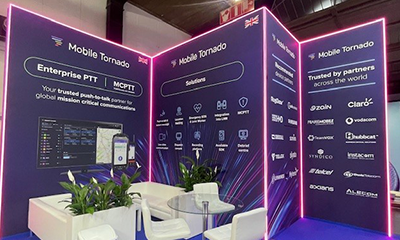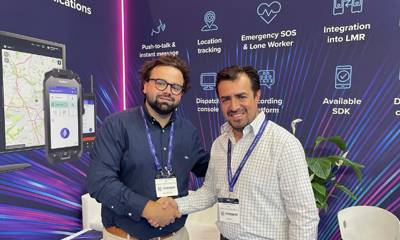Transforming communication in the UK
Push to Talk over Cellular (PTToC) is a groundbreaking communication technology that has experienced a remarkable surge in popularity in recent years. It is a quick and efficient means for both individuals and businesses to establish instant connections, in a similar way to traditional two-way radios and walkie talkies. However, what sets PTToC apart is its seamless integration with cellular networks. In the context of the United Kingdom, PTToC has evolved into a pivotal communication tool with far-reaching implications across numerous business sectors, including public safety, security, transportation and logistics.
In this comprehensive guide to PTToC in the UK, we consider the intricacies of PTToC, from the way it works to the profound impact it is having on the UK’s communication landscape. We discuss the core concepts and applications of PTToC to appreciate its significance in the modern world.
What is Push to Talk Over Cellular (PTToC)?
Push to Talk over Cellular (PTToC), sometimes referred to as Push-to-Talk (PTT) or PoC, is a communications technology that enables instant voice communication over cellular networks. It replicates the functionality of traditional two-way radio systems, such as walkie-talkies, but leverages the power of modern cellular infrastructure to extend its reach. PTToC operates on the principles of half-duplex communication, meaning users can talk or listen but not both simultaneously.
How does PTToC work in the UK?
PTToC functions by creating a connection between users over a cellular network. The process involves users utilising specialised devices or applications on their smartphones or tablets equipped with PTToC capabilities, which can connect to the internet via Wi-Fi or cellular data. PTToC leverages the cellular network infrastructure provided by major mobile network operators in the UK, ensuring wide coverage and reliability.
A central server and control system manage the PTToC service, overseeing user access, group creation, and communication channels. Users can be organised into groups, enabling efficient one-to-many or many-to-many communication.
PTToC excels in offering near-instant communication, making it an ideal solution for situations where real-time responses are critical. Users simply press a button to speak, and the message is delivered to the group.
Significance of PTToC in the UK
PTToC has gained considerable significance in the United Kingdom for various compelling reasons:
Versatility: PTToC can be used across a diverse range of industries, including public safety, transportation, construction, hospitality, and many more.
Cost-Effective: PTToC systems often offer a cost-effective alternative to traditional two-way radios. Not only can users leverage their existing smartphones or invest in specialised devices, thereby minimising the need for additional hardware investments, they do not require the same investment in infrastructure as a traditional two-way radio system.
National Coverage: By harnessing the infrastructure of cellular networks, PTToC can provide expansive coverage across the UK. Users can maintain communication even in remote or rural areas where traditional radios might encounter limitations.
Interoperability: PTToC systems are designed with interoperability in mind, enabling users from different organisations or networks to communicate seamlessly. This feature is particularly valuable in emergency situations.
Enhanced Features: PTToC applications include an extensive feature set, particularly compared to legacy radios. These features include GPS location tracking, text messaging, multimedia sharing and SOS emergency features to benefit lone workers and remote workforces. Some PTToC solutions also include integrated workforce management.
Security and Encryption: PTToC systems frequently incorporate robust encryption and security features, ensuring that sensitive information remains safeguarded during transmission. This heightened level of security is especially critical in situations where confidentiality is paramount.
Use cases in the UK
Public Safety: PTToC technology is employed in the field of public safety to facilitate rapid and coordinated responses to incidents.
Transportation and Logistics: The transport and logistics industry employs PTToC for efficient communication between drivers, dispatchers, and warehouse personnel.
Hospitality: Hotels and event venues use PTToC to coordinate staff and ensure seamless guest experiences.
Construction: Construction sites rely on PTToC for instant communication among different teams and contractors. Lone worker features also help to keep the workforce safer.
Utilities: Utility companies use PTToC to manage field workers and respond to service interruptions promptly.
Push to Talk over Cellular (PTToC) is a game-changer in instant communication. Its significance in the UK is evident across various sectors, offering cost-effective and versatile solutions for organisations and individuals alike. It can help increase business efficiencies and effectiveness by facilitating communication and providing added features like lone worker and workforce management. As technology continues to advance, PTToC is likely to become an even more integral part of the UK’s communication landscape, facilitating swift and reliable communication when it’s needed most.




